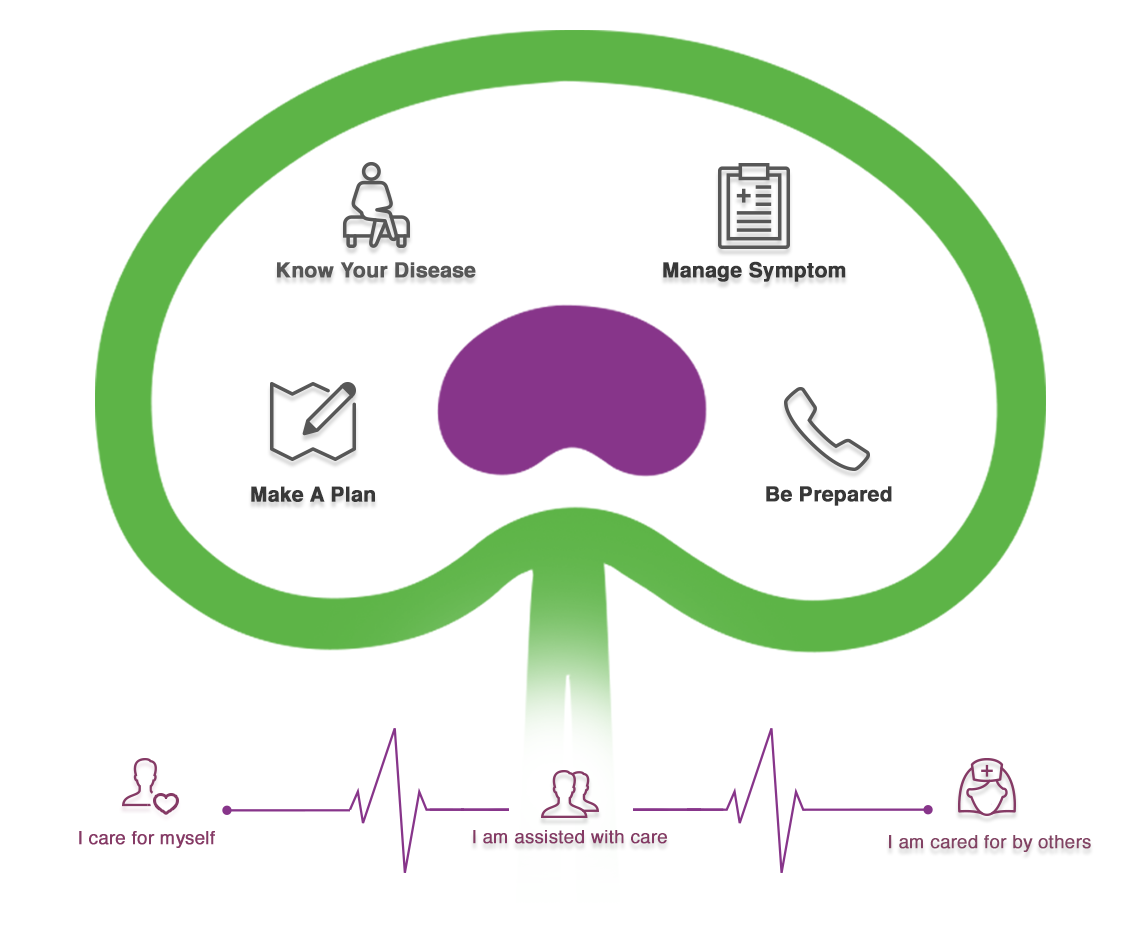Anemia Guideline
Guiding Principles
Patients with CKD are at risk of anemia which can contribute to fatigue and breathlessness. Common management strategies include the use of erythropoiesis stimulating agents and iron supplementation. Bloodwork related to anemia is typically done monthly for chronic kidney disease patients; this could be decreased to every 3 months for conservatively managed patients but should be based on patient preference and symptoms.
GFR 15 - 5 | Slow Decline/Deteriorating | Last 0-5 years of life
For CKM patients, anemia is treated with the goal of decreasing fatigue and dyspnea, as opposed to reducing cardiac mortality or morbidity.
Interventions should be continued only for so long as they are of symptomatic benefit. It should be explained to patients and caregivers early on that there may come a time when the interventions no longer benefit the patient, at which time they would be stopped.
GFR 5 - 0 | Intensive/Near Death | Last 0-2 months of life
As the patient nears the end of life, it is no longer appropriate to manage fatigue and dyspnea via these interventions and they should be stopped. Providing supportive care to address fatigue and using medications such as opioids to manage dyspnea are appropriate interventions at this time.
Objectives
- To achieve adequate hemoglobin and iron levels in kidney failure patients who have true iron deficiency and anemia resulting from their kidney disease.
- Note that interventional guidelines do not replace individualized care and clinical expertise.
TSAT (Transferrin Saturation) 20% to 49%
- This is considered iron-replete; maintain iron stores.
TSAT (Transferrin Saturation) less than 20%
- If patient’s iron stores are low and if patient is not already on oral iron supplement, contact most responsible healthcare provider to consider low dose therapy.
- If receiving oral iron, increase to next incremental tolerated dose (see below).
- An IV iron regime may be considered if the patient is unable to tolerate or reach target levels with oral iron (see below).
- Administer usual concentrations up to 2 mg/mL (mixed in Normal Saline) but higher concentrations may be used.
- Infuse over the following time periods:
- 200mg or less; at least 15 minutes
- 300mg; at least 90 minutes
- 400mg; at least 150 minutes
- 500mg; at least 210 minutes
| Drug | Elemental Iron/Tablet | Dose Adjustment Increment (increase or decrease by) | Maximum dose |
|---|---|---|---|
| Note: Oral iron may cause constipation | |||
| *Proferrin consists of a blood product (heme iron peptide) made from animal haemoglobin and should NOT be taken if allergic to meat products of if animal or blood-based products are not allowed in the diet (i.e., vegan, Jehovah Witness) | |||
| (adapted from AHS Anemia Management Guideline (June 2017), Alberta Kidney Care (AKC) - CKD, PD, HD Programs) | |||
| Polysaccharide Iron Complex | 150 mg/150 mg | 150 mg tablet | 300 mg/day |
| Ferrous Sulfate | 60 mg/300 mg | 300 mg tablet | 900 mg/day |
| Ferrous Fumerate | 100 mg/300 mg | 300 mg tablet | 600 mg/day |
| Ferrous Fumerate (liquid) | 100 mg/5 mL | 5 mL | 10 mL/day |
| Ferrous Gluconate | 35 mg/300 mg | 300 mg tablet | 900 mg/day |
| Proferrin* | 11 mg/11 mg | 11 mg tablet | 33 mg/day |
General Guidelines:
- Target Hgb: 95 – 110 g/L
- Notify most responsible health care provider when:
- Hgb drops > 20 g/L over 3 months.
- Hgb remains out of target after more than 3 frequency changes.
- If Hgb greater than 120 g/L, hold darbepoietin.
- Maximum dose of darbepoietin is 150 mcg subcutaneously q2 weeks.
- Note: Darbepoitin is to be administered SC.
Correct iron deficiency first; this is required for AB Blue Cross funding for darbepoietin.
| < 70 kg | 40 mcg q2 weeks |
| 70 – 100 kg | 60 mcg q2 weeks |
| > 100 kg | 80 mcg q2 weeks |
IF Hgb ≤95 g/L and increased ≤10 g/L over the previous 3 months, increase frequency or dose.
IF Hgb ≤95 g/L and increase was between 10-20 g/L, do not change dose.
| Current Frequency: | Change To: |
|---|---|
| q2 weeks | Increase dose |
| q3 weeks | q2 weeks |
| q4 weeks | q3 weeks |
IF Hgb ≥110 g/L or if Hgb is between 95-110 g/L and this has risen by > 20 g/L over the previous 3 months, decrease frequency or dose.
| Current Frequency: | Change To: |
|---|---|
| q2 weeks | q3 weeks |
| q3 weeks | q4 weeks |
| q4 weeks | decrease dose |
Instructions:
- To increase dose, move down one box. To decrease dose, move up one box.
- IF the patient's scenario does not fall into one of the examples above, contact the nephrologist or designate
- Maximum epoetin alpha (Eprex ®) dose is 15,000 IU weekly .
- Epoetin alpha (Eprex ® ) should not be increased by greater than 30% at any given time (dose decreases may be greater than 30%).
- Epoetin alpha to be administered SC
Additional Resources:



